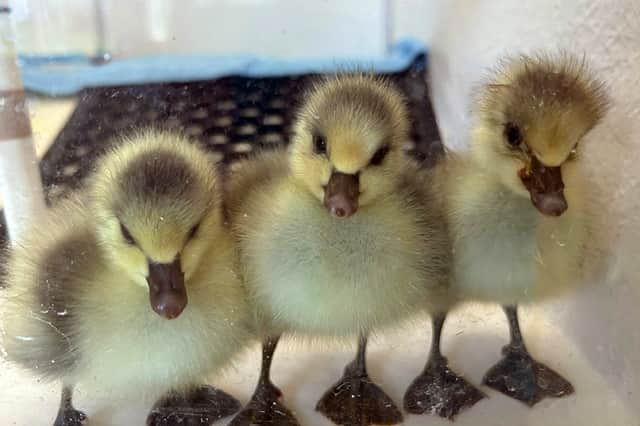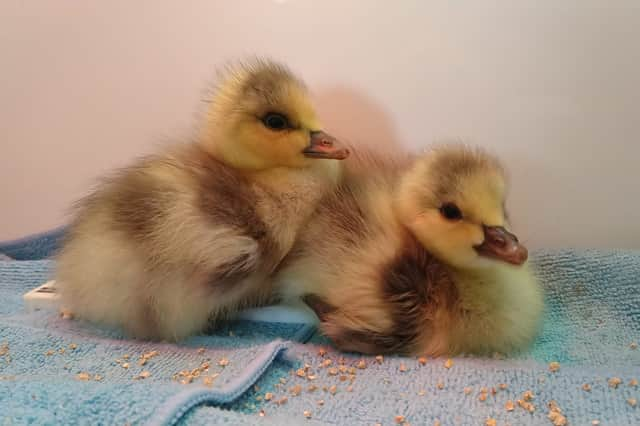Meet Washington Wetland Centre's adorable new arrivals - the first in 10 years
and live on Freeview channel 276
Washington Wetland Centre has welcomed three new fluffy arrivals as the first Bar Headed goslings in 10 years hatched.
It had been an anxious wait for staff at the centre, but on Monday (May 22) the three feathered friends finally emerged from their shells.


Advertisement
Hide AdAdvertisement
Hide AdThe parents have been residents at the centre for more than a decade, but up until this year they had failed to mate.
Visitors to the centre can see the adorable trio, who are currently being looked after at the duckery nursery.
The centre’s PR & Marketing Executive Leanne McCormella said: “We’re so thrilled to have welcomed these three beautiful bar-headed goslings to our collection.
“New arrivals are always special, but as the first to have hatched at WWT Washington in more than 10 years, they’re even more remarkable than usual.
Advertisement
Hide AdAdvertisement
Hide Ad“The parent birds have been part of our collection for all that time and we genuinely don’t know what has triggered them to breed this season in particular.
“But whatever the reason why, it’s just lovely to have all three here safe and well and on show in the nursery area for all our visitors to enjoy.”


Bar Headed geese have a very striking appearance, with horseshoe shaped black bars around their heads.
Indigenous to central Asia, the bird is supremely adapted to high altitude migration, flying at heights of over 4,000 metres across parts of the Himalaya, facing sub-zero temperatures, winds in excess of 200mph and a third less oxygen.
Advertisement
Hide AdAdvertisement
Hide AdBar Headed geese can fly at speeds of more than 50mph and have a special type of blood haemoglobin that absorbs oxygen quicker than other bird species. They also extract more oxygen from each breath than other birds.
The species is currently being studied to help examine how humans can better cope with high altitudes and respiratory diseases.
Comment Guidelines
National World encourages reader discussion on our stories. User feedback, insights and back-and-forth exchanges add a rich layer of context to reporting. Please review our Community Guidelines before commenting.